A Way of Life in the USA
Hunting is a way of life in the United States, and we are here to help you be as successful on the hunt as possible.
The Definitive Elk Hunting Equipment Checklist
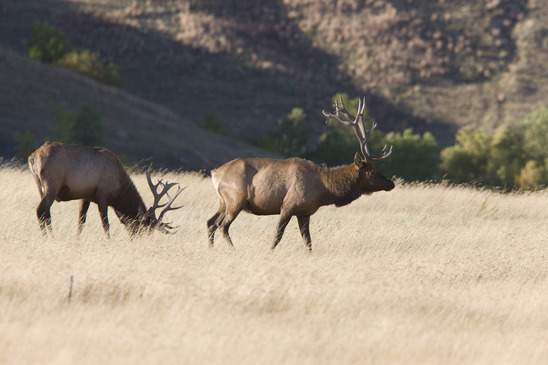 Elk hunting is very popular among hunters, and for good reason. Many hunters choose to go after elk because of the high quality of meat, and elk can be a fun and challenging game animal to hunt. For those who decide to elk hunt, it is important he or she follow state regulation, which will prevent fines or equipment loss if regulations are violated.
Elk hunting is very popular among hunters, and for good reason. Many hunters choose to go after elk because of the high quality of meat, and elk can be a fun and challenging game animal to hunt. For those who decide to elk hunt, it is important he or she follow state regulation, which will prevent fines or equipment loss if regulations are violated.
When an individual decides to go elk hunting, there are certain items that are needed to ensure a safe and successful hunt. Although the list is long, being prepared with the proper items is the best approach to successfully hunting elk. You don’t need to have everything on this list (some items are only useful for certain techniques of hunting, for example), but it is worth reading it over before a hunt to make sure you’ve got what you need.
General Equipment
A hunter will need to prepare general equipment before he or she embarks on an elk hunt. Here is a list of the general items a hunter should include on his or her hunt:
An Elk Hunting License: The first item a hunter needs to include on his or her checklist is a valid license to hunt elk. A license states that an individual has permission to hunt elk in certain areas. If an individual does not have a license to hunt elk, then he or she could face fines, jail time, or loss of equipment.
Ammunition: It is important to pack plenty of ammunition for the hunt. Elk are big game, so it is vital to choose ammunition that is suitable for hunting an animal of this size. The caliber should be an appropriate size to ensure a hunter can safely and humanely hunt the animal.
Rifle: If a hunter is not using a bow, then a rifle should be part of the list. A hunter should choose a rifle that is appropriate for elk hunting. A male elk can weight 600 to 800 pounds, so a hunter should choose a rifle that is suited for killing an animal that size. A rifle with a big caliber that can penetrate the elk at a variety of ranges is the best choice.
Gun Case: A rifle/gun case is needed for elk hunting. A gun case safely stores a rifle when a hunter is not actively pursuing an animal. A hunter needs a gun case to protect his hunting equipment, and a gun case also adds safety for a hunter and those around him or her.
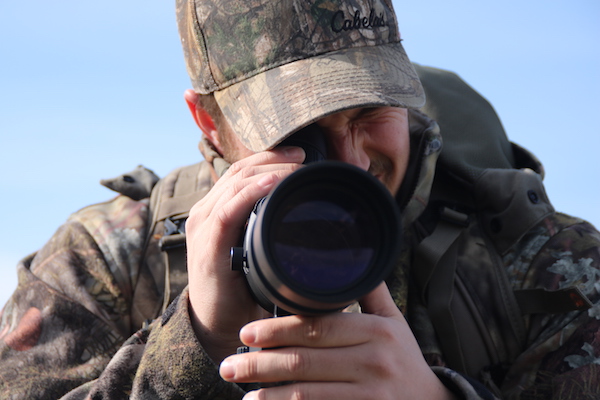 A Spotting Scope: A spotting scope is an important item for elk hunting. A spotting scope has higher magnification than binoculars. It offers hunters a precise image from long-range distances, a spotting scope can be more expensive than a set of binoculars. When elk hunting, a spotting scope is worth the investment.
A Spotting Scope: A spotting scope is an important item for elk hunting. A spotting scope has higher magnification than binoculars. It offers hunters a precise image from long-range distances, a spotting scope can be more expensive than a set of binoculars. When elk hunting, a spotting scope is worth the investment.
Binoculars: For those who do not want to invest in a spotting scope, then a good set of binoculars can be an effective way to spot elk. A hunter should be sure to purchase a set of binoculars with high-quality glass, which will prevent a hunter from straining his or her eyes.
Scent Reduction Spray: Elk have an acute sense of smell, which is why a scent reduction spray should be included on the list. A scent reduction spray eliminates odors on a hunter’s clothing. A hunter will need a scent reduction spray to eliminate the odors that elk can identify as foreign.
Scent Attractant: A bull elk will be attracted to the scent of a female in heat. A scent attractant can work by mimicking the scent of a female elk in heat and attract males. A hunter can benefit from using scent attractant because it will obviously lure male elk to the area.
Water Purifying Tablets: When hunting, it is best to be prepared for any circumstances that may arise. In the event a hunter becomes lost, water purifying tablets can help a hunter stay hydrated until help arrives.
Range Finder: A range finder is a helpful instrument that should be taken on an elk hunt. A range finder accurately estimates the distance of an object. When a hunter has a range finder, then he or she will be able to determine the distance between him or her and the elk.
Sunscreen: When a hunter is in pursuit of an animal, he or she may have to spend hours in the sun. In order to prevent sunburn, a hunter should pack sunscreen. A hunter should even apply sunscreen on cloudy days for added caution against sunburn.
Bipod: A bipod should also be on a elk hunting checklist. A bipod is a two-legged stand that holds an instrument steady. A bipod is important for an elk hunting trip because it can hold a rifle steady and reduce motion.
A Game Camera: A game camera is ideal to have on an elk hunt. A game camera can track elk and where they move. If a hunter has a game camera and uses it to spot elk before the season starts, then it can raise the chances of a successful hunt.
A Gun Hoist: A gun hoist enables a hunter to quickly hoist his or her rifle up to a hunting stand. A hunter can benefit from a gun hoist because it allows him or her to safely get a rifle up to the hunting stand, which will help prevent any injuries or damage to the rifle.
Thermacell: In some states, such as Arizona, an individual can hunt elk starting in mid-August during bow hunting season. If a hunter is planning a hunting excursion during warm months, then he or she should pack a thermacell. A thermacell is a device that repels mosquitoes without a scent. Mosquitoes can be a menace when hunting, so having a thermacell handy can prevent potential mosquito bites.
A Compass or GPS: A compass or GPS should be included in a hunter’s equipment. There are some GPS systems now that can mark and save a location after a hunter has been scouting, which makes it easy for him or her to easily reach their destination on the day of the hunt. A compass or GPS system can also help prevent a hunter from getting lost in unfamiliar territory.
A First-Aid Kit: A first-aid kit is variety of supplies, which can include band-aids, gauze, and antibiotic ointment. A hunter can purchase a first-aid kit or make one. A first-aid kit is a necessary item when hunting because the hunter is using potentially dangerous items that could cause them bodily harm. A first-air kit can help to stop bleeding or clean wounds that could be fatal or severe if left untreated.
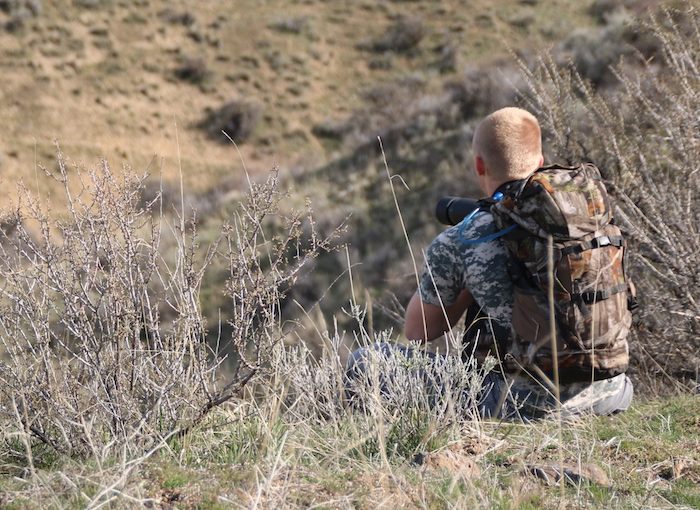 Backpack: Most elk hunters end up carrying quite a bit of a gear into the field, not to mention a huge amount of meat on the way out if a hunt is successful. To carry it all comfortably, it is worth investing in a quality backpack designed to hold everything you plan on carrying as well as pack out the animal. Check out our guide to hunting backpacks to learn more.
Backpack: Most elk hunters end up carrying quite a bit of a gear into the field, not to mention a huge amount of meat on the way out if a hunt is successful. To carry it all comfortably, it is worth investing in a quality backpack designed to hold everything you plan on carrying as well as pack out the animal. Check out our guide to hunting backpacks to learn more.
Ax/Handsaw: An ax or handsaw is vital when hunting because it might assist in helping a hunter achieve a clearer view of the area they are watching, and it allows them to have a clean shot on their prey. If there are branches in the way of a hunters prey, then it may mean that they are unable to take a shot at that trophy elk. With the trimming of a few small branches, a hunter can clear his line of sight while still leaving himself covered.
Food and Beverages: When an individual is hunting, it is crucial to take plenty of high-energy snacks and beverages such as water or Gatorade. Hunting is extremely physical and elk are large animals that will use an ample amount of energy to move and clean if one is killed. By having plenty of snacks and beverages available, a hunter can keep his or her energy level elevated.
Hand Warmers: When it is cold outside, hand warmers can be beneficial to hunters. Hand warmers keep a hunter’s hands warm for a brief period of time, which can help a hunter stay comfortable in cold weather.
An Elk Decoy: An elk decoy is a handy item to have when hunting, which will help a hunter attract elk. An elk decoy can make a bull elk feel less threatened and approach the area, and it gives the hunter the opportunity to design his or her shot carefully.
A Flashlight: A flashlight can help a hunter find his or her path in the early morning or late evening when there is not an abundance of light. When a hunter packs a flashlight, he or she should be sure the flashlight is equipped with batteries and should pack extra batteries as well.
Toilet Paper: Toilet paper is essential when going on a hunt. If you have ever been stuck on a hunt without toilet paper, then it can make for an uncomfortable and messy situation.
Trail Marking Tape: A hunter uses trail marking tape to mark his or her path back-and-forth to a tree stand. Trail marking tape is useful because it also alerts other hunters of your position, which increases safety.
Flares: It is always a good idea to be prepared for any circumstances that may arise when elk hunting, which is why flares should be included on a hunter’s list. If a hunter becomes lost, then a flare can alert a game warden or forest ranger of his or her position.
A Two-Way Radio: Two-way radios are perfect for a hunter who needs to stay in touch with his or her group. A hunter should be sure to select a two-way radio with good range that can work effectively in heavily wooded areas.
A Sleeping Bag: A sleeping bag can be useful when a hunter gets cold or wants to take a nap. The sleeping bag should be waterproof and insulated to help a hunter stay comfortable in rain or cold weather.
A Waterproof Bag: A waterproof bag can come in handy if it rains on a hunting trip. A waterproof bag will keep food, extra clothing, and other equipment dry while it is raining.
A Wind Indicator: A hunter should check the direction and strength of the wind regularly. The direction and force of the wind can have an impact on how a hunter shoots. A wind indicator can gauge the direction and speed of the wind, which will help increases the chances of a successful shot.
Archery Equipment
If an individual plans of hunting elk with a bow and arrow, then he or she will need to take these items on the hunt:
Arrows: If an individual is hunting elk with a bow and arrow, then an ample amount of high-quality arrows need to be packed for the hunt. A hunter needs to be sure to select the right arrows considering the size of the animal.
Bow: A bow is essential when a hunter is planning to hunt elk by archery. A bow should be suitable for hunting large animals such as elk. If a hunter is hunting elk by archery, then it could be beneficial to take an additional bow.
Arm Guard: An arm guard is especially handy for those who want to hunt elk with a bow and arrow, and arm guards are usually made of leather or plastic. Arm guards protect the inside of a hunter’s arm from injury while the hunter is shooting.
A Bow Case: If a hunter plans on using a bow an arrow for hunting, then he or she will need a sturdy bow case. When a bow is not in use, it should be kept in a bow case to protect the bow from being damaged.
A Quiver: A quiver is a container that is used to hold arrows. A hunter will need a quiver when hunting with a bow and arrow. Based on preference, a hunter can use a quiver that is carried on his or her shoulder or placed on the ground.
Broadhead Sharpener: A broadhead sharpener keeps the multiple blades of an arrowhead sharp. A hunter needs a broadhead sharpener to keep the blades razor-sharp, which helps ensure the arrow effectively penetrates and kills his or her target.
Wrist Sling: When a hunter is using a bow and arrow to hunt, a wrist sling should be part of his or her checklist. A wrist sling attaches to the handle of the bow. It is a braided rope that wraps around a hunter’s wrist, which will his or her grip loose. A wrist sling increases accuracy and minimizes error.
Sound Dampeners: A hunter should take sound dampeners when bow hunting elk. They are used to reduce the noise the arrow makes when it leaves the bow. If the string or the arrow slaps the bow as it projects toward the target, the elk may hear the noise and move out of the way of the arrow.
Kisser Button: A kisser button is a device used to pull the string of the bow back, which will help increase accuracy because it acts as a trigger.
Clothing
It is very important a hunter prepares for an elk hunt by packing proper clothing, which can protect the hunter against harsh weather. When preparing for an elk hunt, be sure to pack the following articles of clothing:
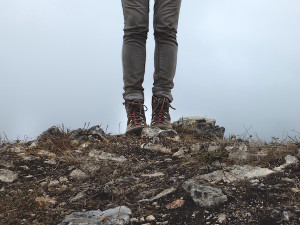 Boots: Proper footwear is important when embarking on an elk hunt. Insulated and waterproof boots can keep a hunter’s feet dry and warm. Insulated boots can also protect a hunter’s feet from becoming injured from dangerously cold weather.
Boots: Proper footwear is important when embarking on an elk hunt. Insulated and waterproof boots can keep a hunter’s feet dry and warm. Insulated boots can also protect a hunter’s feet from becoming injured from dangerously cold weather.
Insulated Socks: Insulated socks should also be included when packing for an elk hunt. Depending on the weather, insulated socks can help keep a hunter’s feet warm and protected against harsh weather.
Gloves: When it is cold outside, gloves are necessary for elk hunting. Gloves can protect a hunter’s hands, and they keep a hunter’s hands comfortable in extremely cold weather.
A Face Mask: A face mask can be a useful clothing item for an individual hunting elk. A face mask can protect against wind and cold weather, and it can protect against the sun.
A toboggan or baseball cap: When it is cold, a hunter should take a toboggan to keep his or her head warm. If it is warm, then a baseball cap can help keep the sun out of a hunter’s eyes. It is recommended that hunters wear hats that are bright orange or yellow, which will help them stay visible to other hunters.
Safety Vest: In order to practice safety when hunting, hunters should always take necessary steps to make themselves visible to other individuals who may be hunting in the same proximity. A bright orange or yellow colored vest should be worn by a hunter at all times, which can help prevent accidental shootings.
Insulated/Moisture Wick Clothing: A hunter should be prepared to stay warm when he or she is hunting in cold or wet weather. Insulated and moisture wick clothing will keep a hunter dry and warm throughout a hunt. Long and short sleeve shirts, pants, windbreaker jackets, and underwear should be included on the list.
A Rain Suit: A rain suit is also an essential clothing item that should be included on an elk hunt. A rain suit allows a hunter to continue to pursue elk without becoming too wet when it is raining. When it is raining, staying dry with a rain suit will help a hunter stay comfortable.
After the Kill Equipment
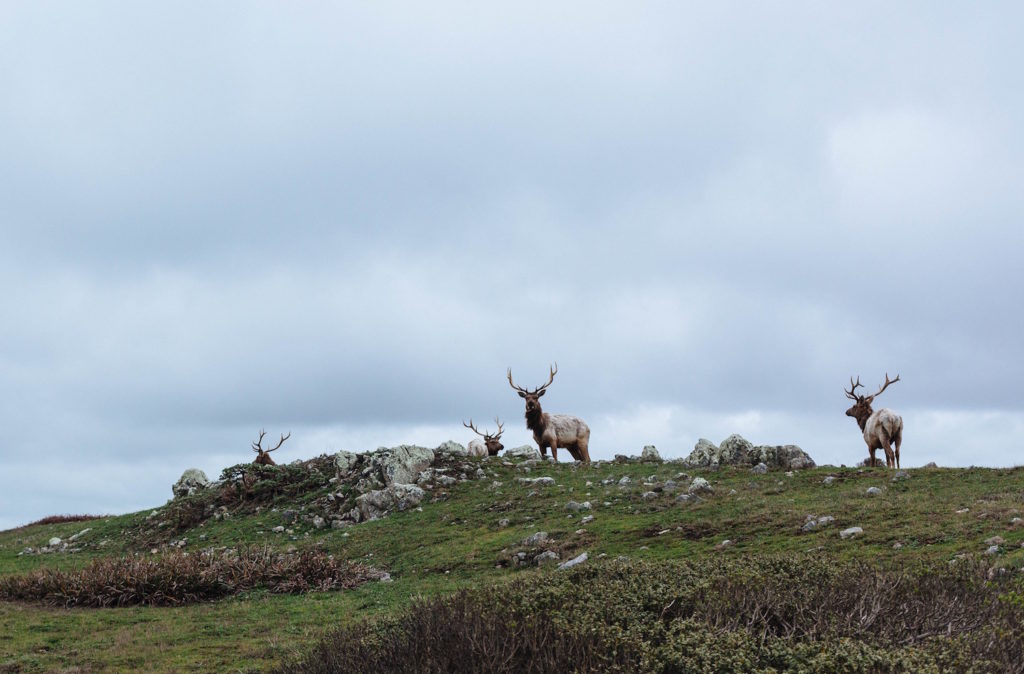 If a hunter is fortunate enough to kill an elk, then there are certain items that are needed after a kill. To be prepared to the fullest, a hunter should be sure to pack these items that are necessary after the kill:
If a hunter is fortunate enough to kill an elk, then there are certain items that are needed after a kill. To be prepared to the fullest, a hunter should be sure to pack these items that are necessary after the kill:
Game Cart: A game cart is a cart or buggy that is used to haul the elk to the destination where it will be cleaned. Elk are extremely large animals and it would be almost impossible for a hunter to move on his or her own. A game cart makes transporting the elk faster and easier.
Game Shears: Game shears are used to cut the limbs off the elk during cleaning. Game shears are designed to efficiently remove limbs from large animals, and game shears are quicker and easier than using bone saw.
Game Bags: Game bags are used to store meat. When a hunter packs durable game bags, the meat collected after the kill will stay free from debris, insects, and dirt. Elk meat is known for its quality, which is why it is important to preserve the meat by using game bags that will protect it from the elements.
A Pelvic Saw: A pelvic saw can be used to cut through the pelvic bone and any other areas that are too strong for game shears. Cutting through an elk’s pelvis or sternum can be extremely difficult, which is why a strong pelvic saw can be extremely useful when cleaning an elk.
Knives and a Sharpener: A hunter should be sure to pack knives and a sharpener, which are needed for cleaning after the kill. Knives are used for skinning during the cleaning process, so they should be sharp. A sharpener should also be packed in case any of the knives become dull during cleaning. For field dressing an elk, you’re probably going to want to invest in a top quality fixed blade knife.
A Cooler: If a hunter is planning on taking the meat home, then a cooler is essential to preserve the freshness and quality of the meat.
When preparing for an elk hunting trip, it is important to pack all the items necessary to ensure a hunter stays safe and has a good chance to kill his or her prey. Elk are extremely hard to hunt. When a hunter is prepared with the right equipment it allows him or her to focus on hunting elk, not stressing about forgotten items that should have been packed.
